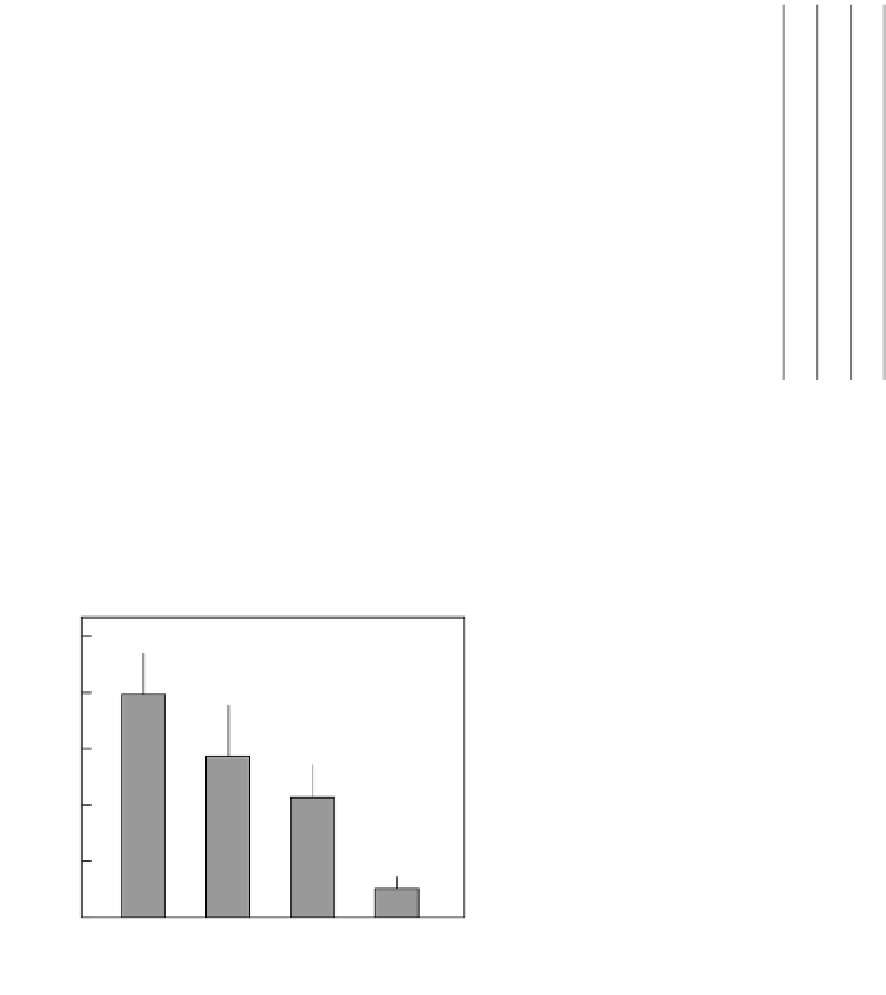Environmental Engineering Reference
In-Depth Information
1980
1981
1982
1988
1.1
20
20
20
20
5
5
5
5
15
15
15
15
10
10
10
10
1.3
19
19
19
19
9
9
9
9
14
14
14
14
4
3
4
3
4
3
4
3
8
13
8
13
8
13
8
13
1.5
12
12
12
12
18
17
16
18
17
16
18
17
16
18
17
16
2
2
2
2
1.7
7
7
7
7
1
1
1
1
6
6
6
6
11
11
11
11
1.9
0
0.5 1.0 1.5 2.0
0
0.5 1.0 1.5 2.0
0
0.5 1.0 1.5 2.0
0
0.5 1.0 1.5 2.0
Cattle (no. ha
-1
)
Fig. 13.4
Differentiation of the 20 pitfalls for invertebrate fauna along an elevational gradient (Ordance datum) by
cluster analysis for the different stocking rates installed in 1980 and continued during subsequent years on the salt
marsh of Leybucht, Germany. After Andresen
et al.
(1990).
2005a). Although geese numbers declined, especially
in autumn, in the 10-year-ungrazed part of the
Hamburger Hallig, Germany, the numbers of some
breeding birds increased (Stock & Hofeditz 2000,
2002).
n
=
26
21
25
13
10
a
8
a
6
ab
13.5 Restoration of intertidal flat
communities
4
2
b
To restore damaged intertidal flat communities to
a more natural and healthy state, the reduction of
pollution and eutrophication are relatively straight-
forward, although not necessarily easy, issues to deal
with. Once their influx into intertidal flat ecosystems
has stopped, we predict a gradual return to the
original state, all else being equal. But other things
do not usually remain equal. For example, many
intertidal-flat ecosystems in the world are now
invaded by exotic species, of which some, such as the
Pacific oyster, have the tendency to dominate the com-
munities in terms of space and resources (Carlton 1999).
Pacific oysters are rapidly becoming a pest in Dutch
intertidal areas where they continue to increase their
coverage of considerable expanses of intertidal flat.
It has been suggested that in order to restore the
0
intensively
grazed
extensively
grazed
short-term
ungrazed
long-term
ungrazed
Grazing regime
Fig. 13.5
Average goose grazing pressure at transects
in the entire Wadden Sea from the seawall to the
intertidal flats in relation to livestock grazing regime
for all transects that were paired within the same
site. Different letters indicate significant differences
(
P
< 0.05). After Bos
et al.
(2005a).
inland species of tall forb communities (Andresen
et al.
1990). The grazing intensity of winterstaging
geese was less in long-term ungrazed than in grazed
salt marshes in the Wadden Sea (Fig. 13.5; Bos
et al.




















































































